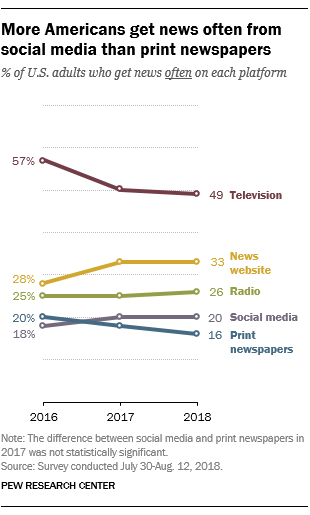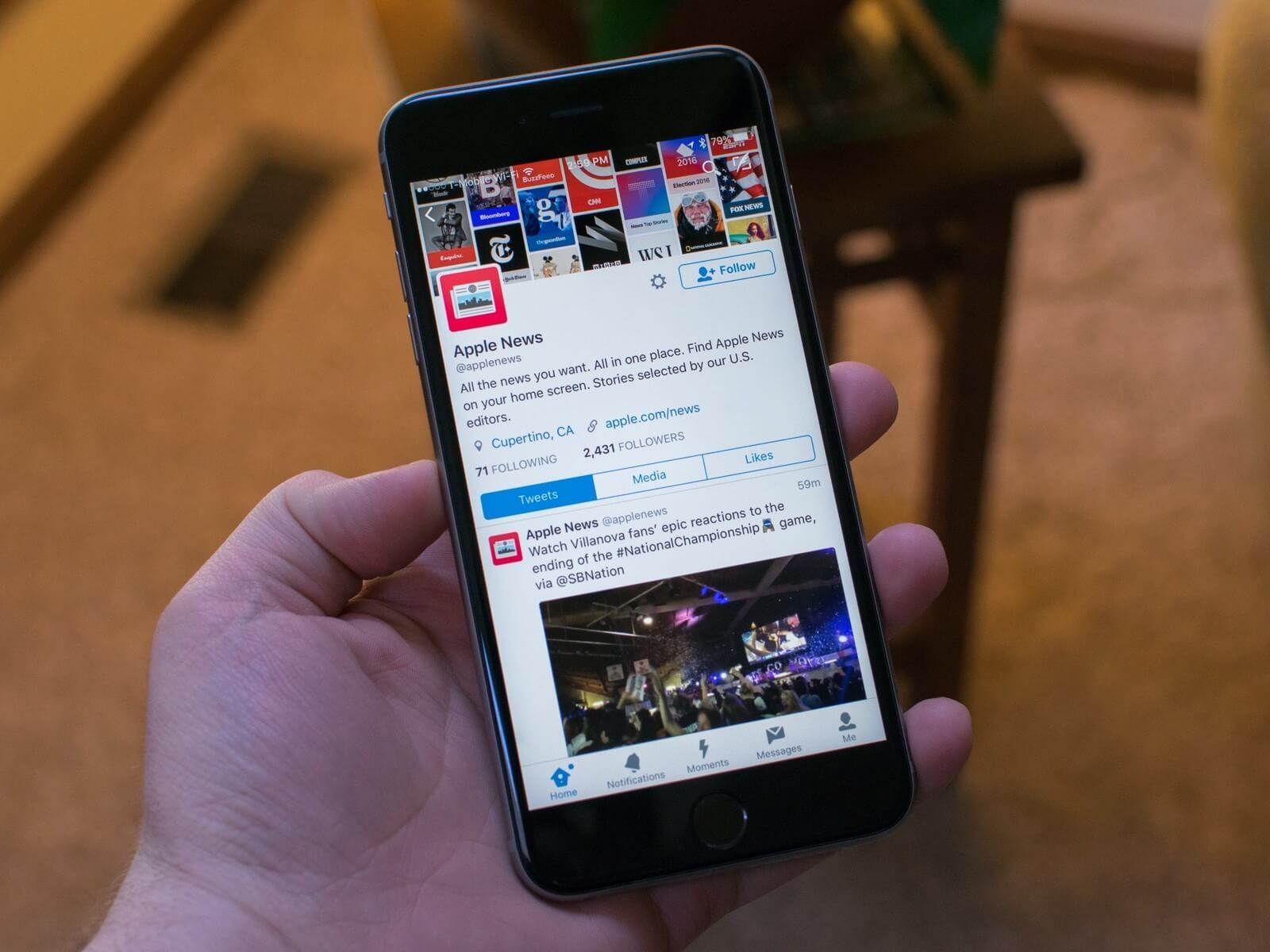Why it matters: As more people continue to get their news from social media, there has been a decline in print newspapers as a primary source of news. This will continue to place burden on social media outlets to prevent so-called "fake news" from proliferating on their respective platforms.
The rise of social media (and the internet in general) has led to a slow migration of news sources from traditional media such as newspapers and television to internet based sources. In fact, according to the Pew Research Center, about 20% of adults get news often on social media as compared to 16% from print newspapers.
Many newspaper outlets have added digital subscriptions to their newspapers as more and more people consume media on smartphones and tablets. Many big outlets such as the Wall Street Journal and New York Times also utilize social media as a way to report news. As a result, there has been a decline in paper newspaper circulation.

That said, television is still the number one way most adults prefer to consume news, although even that has seen a sharp decline since 2016. According to Pew, the number of people who prefer getting news from television has declined from 57% to 49% in only two years. However, there is a considerable generational difference even among news consumption via TV.
"A large majority of those 65 and older (81%) get news from television often, as do about two-thirds (65%) of those 50 to 64. Far fewer young Americans are turning to television news, however - only 16% of those 18 to 29 and 36% of those 30 to 49 get news often from television".
Of course the opposite is true when it comes to getting news via social media. Young people ages 18 to 29 are four times as likely to consume news on social media than people over 65 years old. Interestingly, young people are also more likely to be more diverse in their news platforms where the older crowd tends to rely on a single news platform.
As news consumption continues to trend in the digital direction, more scrutiny will be levied on social media platforms such as Twitter and Facebook due to the prevalence of "fake news" stories. On the other hand, it also makes it harder for one source to have a monopoly on news when there are many outlets to choose from at once.
